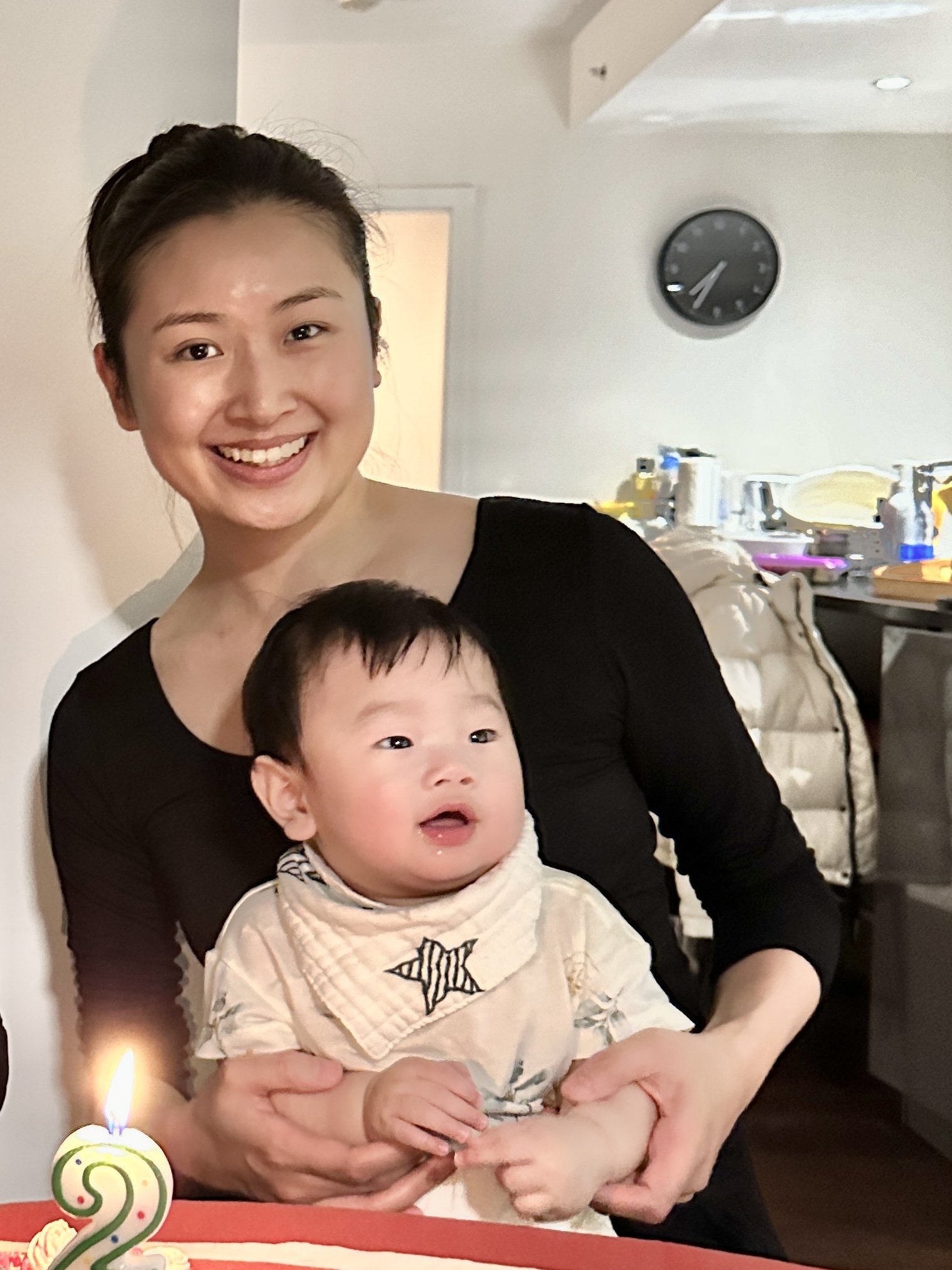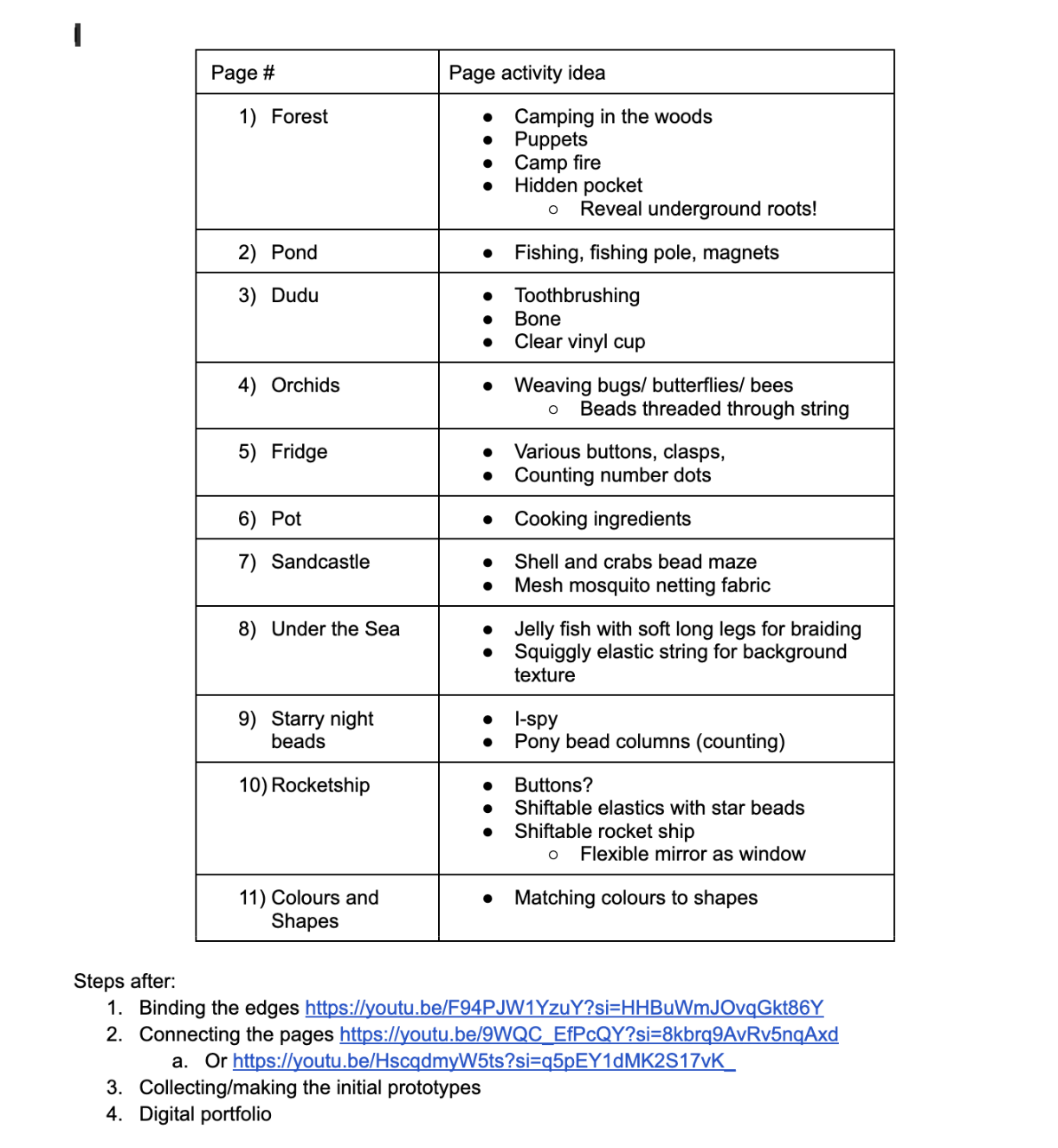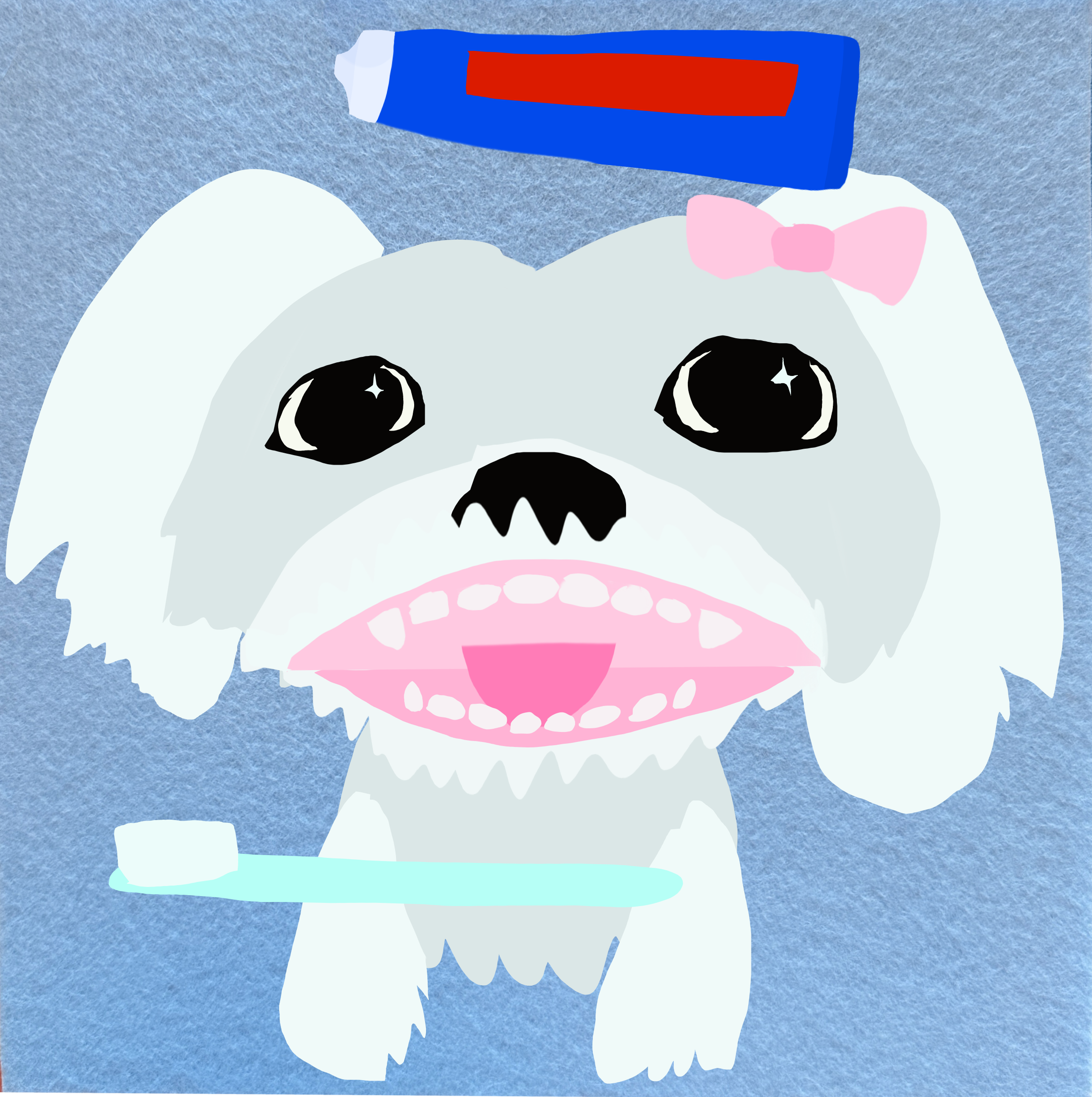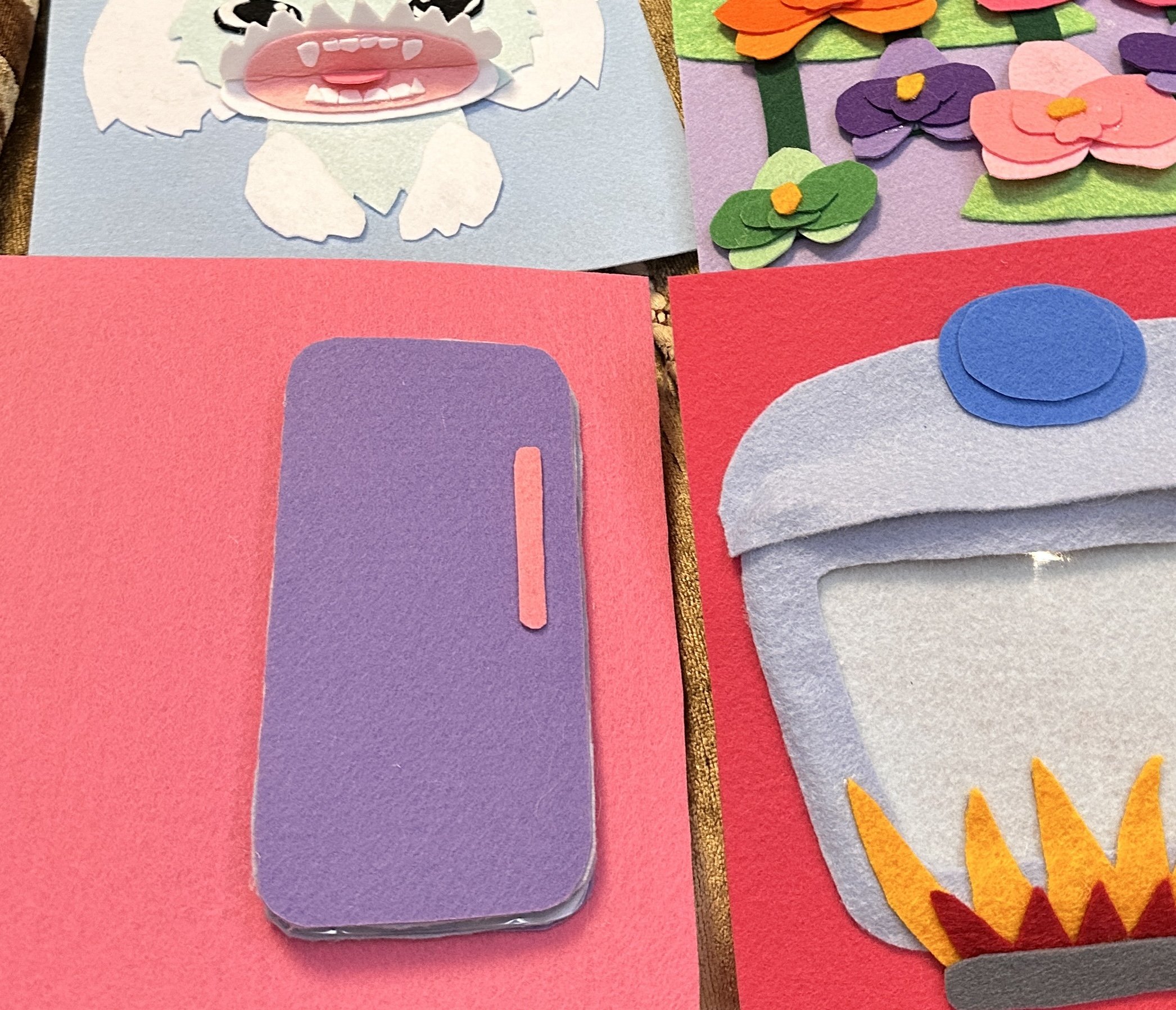Made out of felt fabric, busy books are loaded with fun and challenging finger activities for young kids.
My goals for collaborating with a family to create a busy book: creating wholesome memories + bringing fascination into the breadth of art making.
Inspiration
Megan is not just a mentor!
A friend
Art collector
Mother to Aiden (I have zero experience in being a parent)
Expert of Aiden’s interests
Busy book receiver
We communicated through in-person visits, emails and direct messages.
Their beloved pup Dudu (important)
How I decided on making busy books?
I want to give gifts.
Discovered busy books through Etsy - I would’ve wanted one as a kid.
Discovered the term “functional art and design” - and realized I’ve never made anything functional before.
Thinking about quality education, and also thinking about fun, and also thinking about my ikigai, and also thinking about how to inspire through art.
Initial Schedule
-
Review project requirements, goals, and expectations
Set communication channel with the family (interviews, email, phone)
Create a detailed project plan
Research child development stages of play for the child’s age
Begin family engagement: conduct initial interviews or surveys
Revise the initial detailed project plan based on research and initial feedback
-
Finalize the material list based on safety and durability considerations
Begin sourcing materials
Begin creating initial miniature prototypes of busy book pages
Test prototypes for usability, safety, and visual appeal
Gather initial feedback from a small group (if possible), and the family
-
Refine busy book prototype based on the collected initial feedback
Make any necessary adjustments to enhance functionality and aesthetics
Finalize the design layout for each busy book page
Develop a detailed plan for personalizations based on the family’s preferences
-
Begin the production of the genuine busy book pages
Double check all necessary materials are on hand and in sufficient quantities
Begin adding personalized details of the busy book pages based on information gathered from families
Continue coordinating with the family for any additional input or change
-
Assemble the busy book pages together
Conduct quality checks to ensure safety and durability
Share prototypes with families for final feedback
Make any last-minute adjustments or customizations
-
Complete the assembly of the busy book
Ensure each book meets safety standards
Packaging the busy book as a gift to the family, include any additional small gifts
Arrange a meeting with the family and deliver the busy book gift
Begin preparing Capstone presentation
Organize the documentation of the entire design process, including challenges and solutions
-
Assembling a Capstone presentation
Final touches and Rehearsal
Capstone Presentation, present my personalized fabric busy book project
Discuss the research, design process, and outcomes
Submit the Capstone project to CLC. Including extra documentation and any required deliverables
Research
Play is more than for amusement, it’s a conduit to extensive learning…
-
Description Renowned American sociologist and researcher Mildred Parten describes the six:
Unoccupied play
Solitary play
Onlooker play
Parallel play
Associative play
Cooperative play
He also acknowledges that every individual grows at different paces.
-
It’s good to provide children open-ended materials like building blocks, Play-Doh, or art stuffs. Great for imagination and learning to narrate themselves.
It’s important to empower children to guide their playtime (with safety limits of course). This kind of autonomy is really great for fostering self-directed learning.
-
https://kidshealth.org/en/parents/safetoys-young.html
Objects should be least 3 cm x 6 cm, bigger than a windpipe.
-
Example: https://www.ncbi.nlm.nih.gov/pmc/articles/PMC10353947/
Study by pediatrician and clinical researcher Dr. John Hutton, connects the dots between heightened screen use and effects on the brains of preschool- aged children. His findings are still preliminary, but it does suggest that children who are exposed to more screen time are more at risk of developmental delays.
Again, the brain is most malleable during those first five years of life. What it absorbs during that time can last a lifetime.
American Academy of Pediatrics recommend that kids under 18 to avoid screens unless it’s face-timing with family, and kids aged 2-5 can enjoy quality educational content like Sesame Street while parents “co-view” and engage with them.
Sesame street is a decent example of education mixed with entertainment (developed with researchers) designed for promoting accessible education - they even have Sesame Workshop
-
Keeps kids quiet and occupied, and is more interactive than TV
Portable, great for car rides and outings
Decreased colouring sheets at restaurants, more Cocomelon…
Can be educational
Covid-19
Safety risks with playing outside
Scrutinizing physical play safety - not always better? Consider the trade-offs that electronic devices bring in place of safety.
-
It seems so, but it’s really difficult to find innovative alternatives.
Busy books aren’t a content buffet like iPads, but that can be a great thing.
Busy books are also portable and safe.
Inherently conducive to open-ended play:
imagination, storytelling, early literacy/numeracy, fine motor skills, socio-emotional skills, cognitive development, communicative development
Many of them target self care skills like getting dressed, organizing lunch, etc
Making It
Conceptualizing my busy book
Bare bones sketches - designing the basic structure of a busy book, taping paper flaps/detached pieces.
Process of buying materials through Amazon, Etsy, craft stores, going to China…
A lot of felt…
Prototyping with scrap paper.
Procreate for planning the details.
Yikes, trust the process.
^I had to start over sometimes.
More process photos.
More paper samples - realized they were great stencils too.
Hand-sewing.
Machine sewing.
Done!
-
Step up the safety… I will swap out small parts before giving it to Aiden
Cleaner edges
Cut down on bulk
Avoid using hot glue gun next time - only sewing
Make machine washable
Getting more feedback. When I started Aiden was 8 months old, now he is almost 15 months. Yet I still managed to make a busy book over a year above his age level.




































